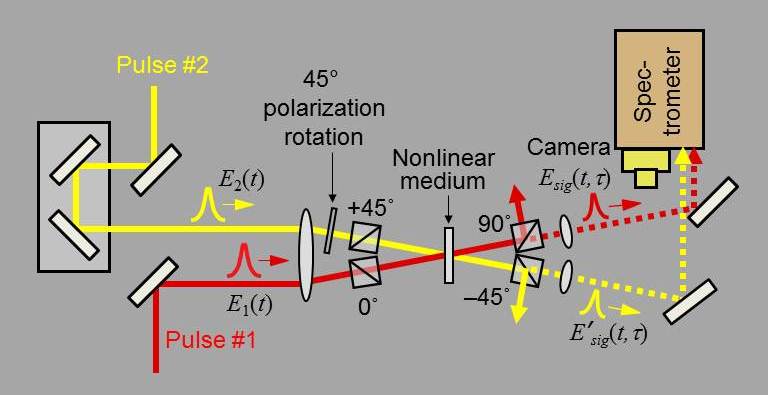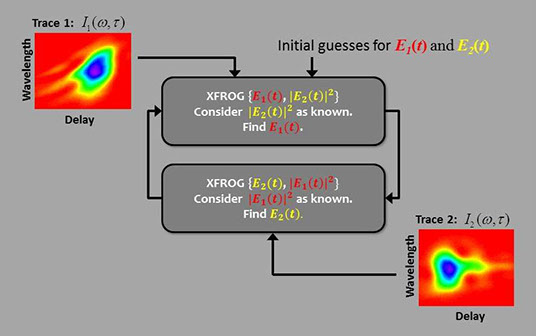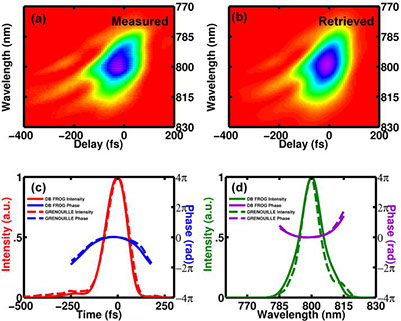Double Blind FROG measures two pulses at once.
In ultrafast-optical experiments, it's often necessary to simultaneously measure two very different pulses. To solve this problem, we began with XFROG, a FROG variation in which one of two different pulses is known and which quite reliably yields an essentially unambiguous measurement of the other. We also used a polarization-gating beam geometry, in which one pulse gates the other. But if you tilt your head by 45 degrees, the other also simultaneously gates the one.


In our new method, Double Blind (DB) FROG (above), two XFROG traces are measured simultaneously. DB FROG takes advantage of the obvious fact that, in an XFROG, as one pulse gates the other in the nonlinear medium, the other is clearly simultaneously gating the one. If two gated signal pulses are generated, it is then usually straightforward to spectrally resolve and measure both. The result is the generation of two different spectrograms.
DB FROG Algorithm
DB FROG then uses the standard XFROG algorithm with no modifications to the basic code. It simply assumes that one pulse is known (even though it isn't) and, using the XFROG algorithm in conjunction with one trace, to find the other, and then vice versa using the other trace (above). This process is continued until both pulses are retrieved.
DB FROG naturally operates on a single-shot basis. Grad student, Jeff Wong, has recently performed nice experiments that confirm its ability (one measured pulse is shown at right) to measure two pulses simultaneously. We've also performed theoretical simulations of its algorithm for more complex pulses.

Read the paper now (Wong, et al.). In future work, we will more completely study the DB FROG algorithm performance and also measure more complicated pulses, including, if possible, continuum.
